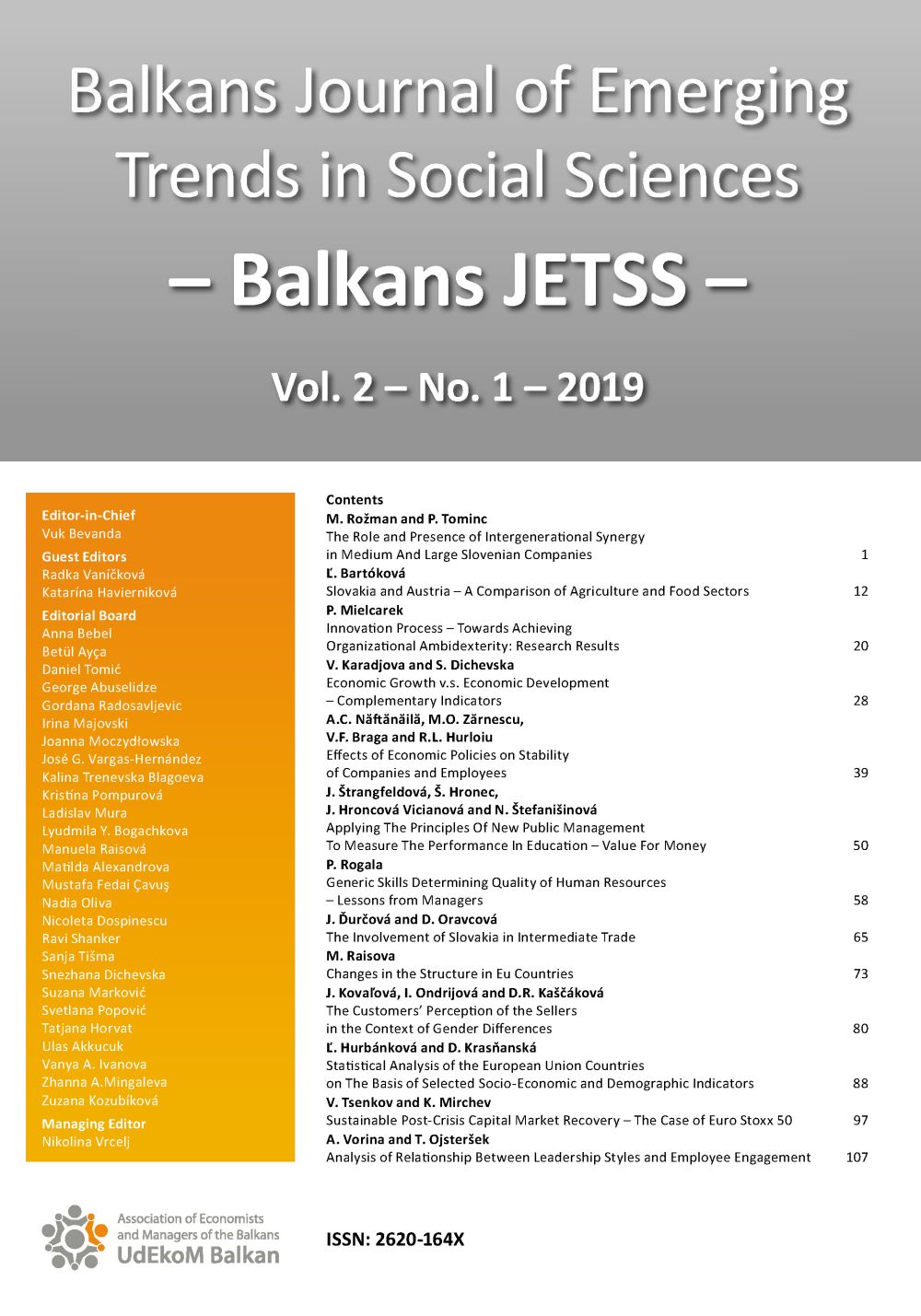CHANGES IN THE STRUCTURE IN EU COUNTRIES
CHANGES IN THE STRUCTURE IN EU COUNTRIES
Author(s): Manuela RaisováSubject(s): National Economy, Supranational / Global Economy, Business Economy / Management
Published by: Udruženje ekonomista i menadžera Balkana
Keywords: Structural Gap;Structural deviation;Estonia;Germany;Gross Value Added;Employment;
Summary/Abstract: The divergent developments in productivity and employment over the past two decades, as well as the crisis and subsequent recovery of the global economy have led to significant changes in different parts of the economic structure in all EU countries. The aim of our study was to examine changes in the basic segments of the economic structure of European countries. The development of segments is assessed through the indicator of gross added value (in current prices) and employment in the period 1995 to 2017. We compared the situation of the two main groups of European countries - the original and new EU countries. We note that there are significant differences between these groups, especially in the 1990s. Subsequently, there have been changes in the structure of new countries that have narrowed the gap between countries. The structural gap between countries has slowly diminished in average. However, the crisis has significantly delayed the process of convergence and the economic recovery period has not recovered to the pre-crisis situation. On the contrary, after the end of crisis the structural gap has thus re-expanded in a number of cases. In this article we target on the comparison of Estonia and Germany. Estonia represents precisely the group of countries whose structural gap has widened after the end of the crisis. On the other hand, the German economy is seen as a stable backbone of European politics and economics. We considered Germany the most economically strong representative of the old EU countries. From this point of view, our research was based on the assumption that Estonia wants to bring its economy closer to Germany’s economy. We monitored whether the Estonian economy was getting closer or moved away from the German economy. Our results confirmed that Germany’s economy is stable and more or less unchanged for more than 20 years. However, the assumption that Estonia’s economy is moving closer to Germany’s economy has not been confirmed. The opposite is probably true.
Journal: Balkans Journal of Emerging Trends in Social Sciences Balkans JETSS
- Issue Year: 2/2019
- Issue No: 1
- Page Range: 73-79
- Page Count: 7
- Language: English

